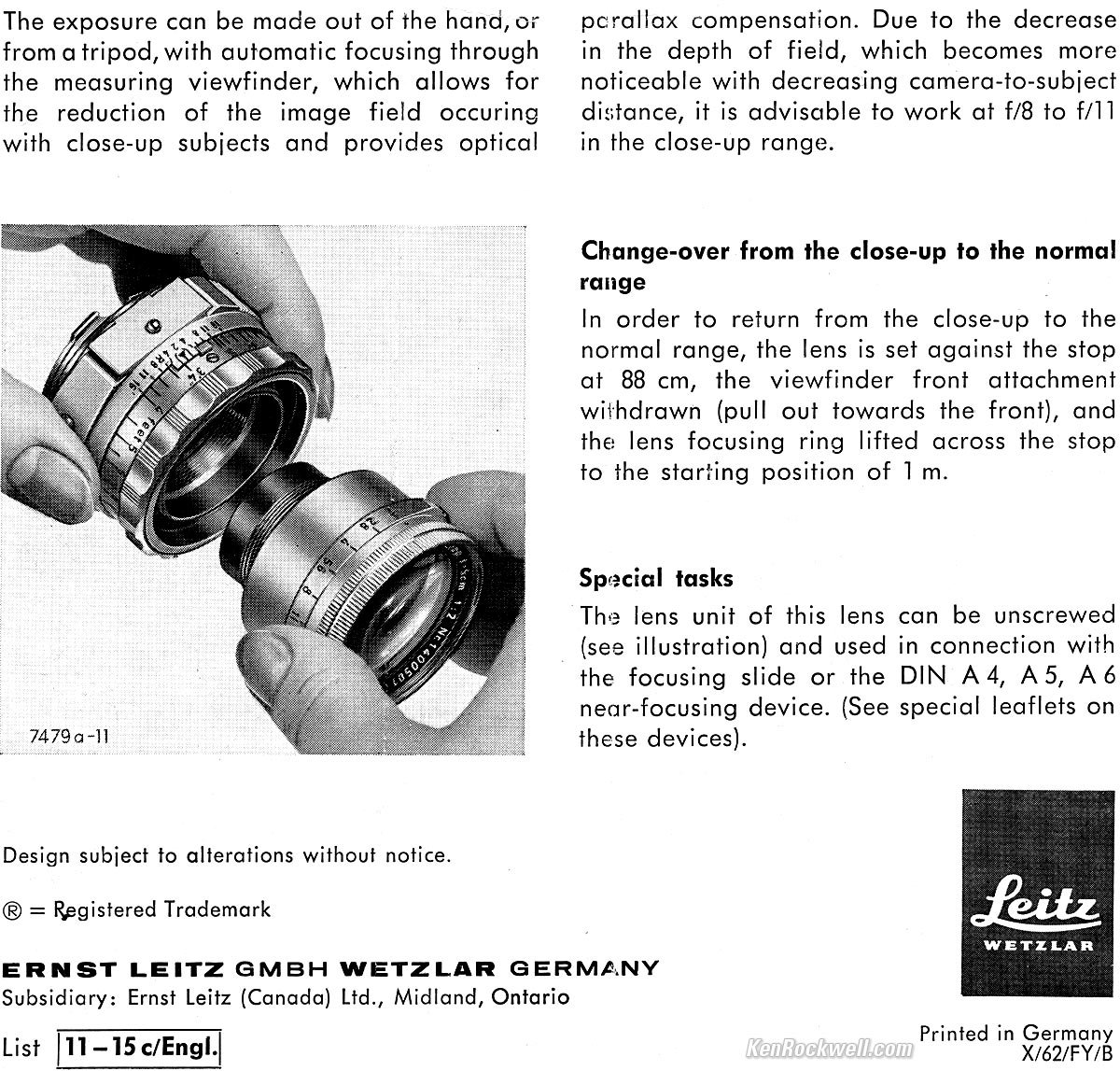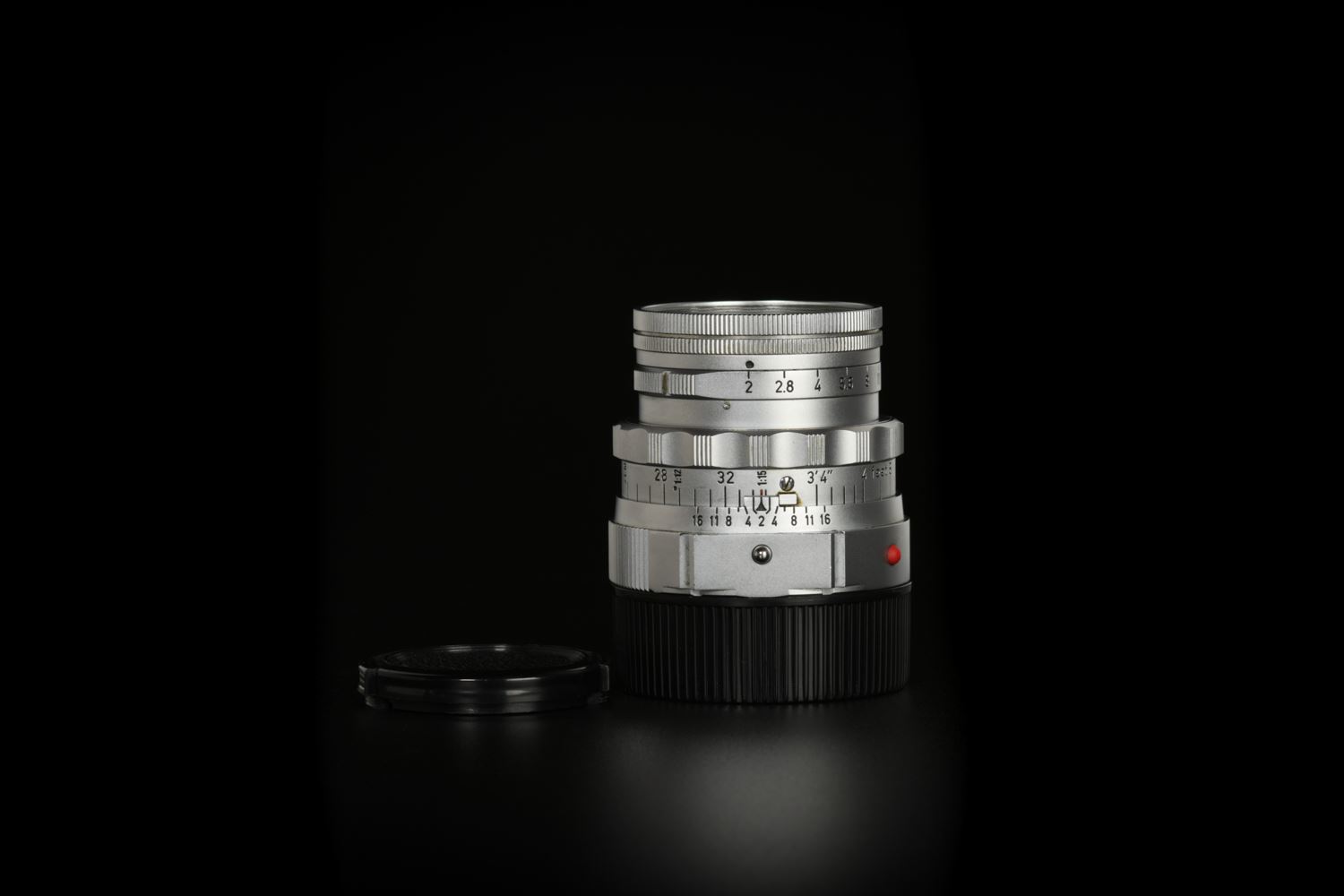

On the lens, the first 100 degrees of focus throw covers the normal range from 0.3m to infinity.
#LEICA 50MM SUMMICRON DR REVIEW FULL#
On these EVF cameras, the full focus range will feel very natural. On the other side, I could see a lot of use for compact travel or video usage on the SL2 and SL2-S. So while not able to fully take advantage of the close focusing ability of the lens, users of non-live view cameras like the M9 or M7 can still use the 35 APO-Cron as a standard M lens. When in this range, focusing is performed using live view, not using the optical rangefinder. While almost all M lenses are bound to a minimum focus distance of 0.7m, the physical limit of the optical rangefinder in an M camera, the new 35mm can decouple and focus all the way down to 0.3m. APO-Summicron 35mm lenses – M on the left, SL on the right Close Focusīesides pure imaging performance, the APO-Summicron-M 35mm f/2 ASPH has another trick up its lens barrel. Incredible achievement to match what is arguably one of the best lenses in the entire roster in such a significantly smaller package. The SL lens on the right comes in at 102mm long and 73mm in diameter, with an E67 filter thread and a hefty 700g. The M lens on the left measures 41mm long and 53mm in diameter, with an E39 filter thread and weighs 320g. APO-Summicron 35mm lenses – M on the left, SL on the right Then you realize that the M lens is less than half the size and weight as the SL 35mm. While the SL version does manage to eek out an even more jaw-dropping wide-open performance, once stopped down, these two APO-Summicrons are on par. The lens performance becomes even more impressive when compared directly against the current top dog, the APO-Summicron-SL 35mm f/2. 100% CropĬompared to the APO-Summicron-SL 35mm f/2 ASPH Detail resolution is flat out impressive, especially in the 100% crop. So what's this performance look like in a real situation? Here's a fairly geometric image, shot wide open. Relative distortion is also quite minimal, registering a barely noticeable -1% result. Stop down another stop to f/5.6 and we're treated to an almost perfect MTF result, with uniform sharpness from corner to corner. Once stopped down just one stop to f/2.8, the MTF curves flatten out even more, with edge performance almost equaling the center. Of course, there is some fall-off towards the corners, but even the 60% contrast result is more than respectable. What we can see is that wide open, the 35 APO-Cron is resolving 40 lp/mm in the center of the frame at a staggering 90% contrast when at infinity.

We've also got the distortion charts as well. As with all Leica MTF charts, there are four measurements: 5, 10, 20 and 40 lp/mm. Here, you can see the MTF charts wide open at f/2, then stopped down one stop to f/2.8, then finally two stops to f/5.6. Head of optical design Peter Karbe MTF Charts Always on the forefront of optical design, Peter Karbe and his team continue to outdo themselves. The result – a level of performance never before seen in a 35mm M lens. And we're fairly sure that this is the first time that Leica has used four aspheres in one optic. It's safe to say that when nine out of ten elements are constructed from exotic and specialized glass, this is not your run-of-the-mill design. And with eleven aperture blades, out of focus areas are buttery smooth. The mix of specialized glass types effectively eliminates both chromatic and apochromatic aberrations, earning the lens its APO designation. Comprised of ten elements arranged in five groups, three of which reside in a floating element group, the 35 APO-Cron houses four aspherical surfaces, six lenses with anomalous partial dispersion, and three with a high refractive index. The APO-Summicron-M 35mm f/2 ASPH measures a mere 41mm long from the mount with a 39mm front filter diameter, yet packs an extremely advanced and downright impressive optical design. And its price tag of $8,195 reflects this. Rather, like the 50 APO before it, the 35 APO-Summicron-M represents the absolute top performance available in its focal length.

Just as the APO-Summicron-M 50mm f/2 ASPH didn't supplant the standard 50 Cron, this new 35mm doesn't replace the current Summicron-M 35mm f/2 ASPH. Offering uncompromising reference-class optical performance along with a new close focus functionality, the lens is surprisingly compact and very lightweight. Today, Leica has announced a new addition to the M lens lineup, the Leica APO-Summicron-M 35mm f/2 ASPH.


 0 kommentar(er)
0 kommentar(er)
